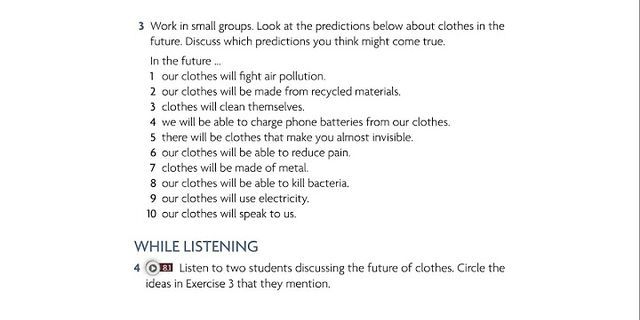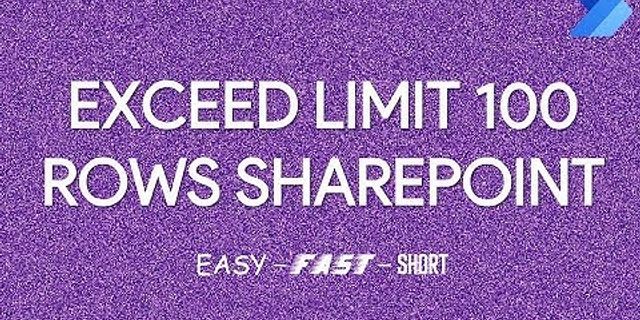 Embracing new processing platforms, sporting the latest GPUs, and implementing faster SSDs have become the norm in advancing specs. However, “the next big thing” doesn't simply fall out of the sky waiting for someone to catch them - companies need to monitor consumer concerns and create ways to address them in their products - just like what ASUS is doing with their new OLED display notebooks. But why take the plunge with OLED displays? Well, it all goes back to studying the market, and we’ve certainly heard this line a thousand times before. Technology as we know it is developing and evolving at a breakneck pace, and it goes without saying that consumer expectations are changing with it too as they yearn for newer and better technologies to enhance one’s quality of life. Naturally, notebooks are no exception to this rule, and companies like ASUS must devise ways to continue staying ahead of the curve. According to them, users are now looking out for displays that can offer excellent content creation and entertainment experiences, which brings us to the next link in the logic chain - OLED displays. Five reasons OLED screens are better than LCD screens Of course, ASUS hasn’t made this jump merely because they drew a simple line from point A to point B. Apart from being the most immersive screen technology offered widely today, OLED displays actually outperform LCD displays in five specific areas, which we’ll be taking a look at now.
First, the ASUS OLED lineup of notebooks all sport a 100% DCI-P3 best-in-class colour gamut as opposed to the standard 62.5% sRGB (45% NTSC) of most LCD notebook screens. This is particularly important for those looking for vivid imagery - no matter whether they’re content creators, catching up on your favourite show, or gamers looking to play the latest AAA titles. You’re guaranteed more vibrant and true-to-life colours, which allows for more precise creative output and greater immersion. Additionally, ASUS’ OLED screens are also DisplayHDR 500 True Black certified, allowing them to render much deeper blacks than LCD screens and fill even the darkest images with crisp detail. This is very readily apparent the minute you bring up any conventional LCD screen notebook next to an OLED powered one. 
Now, if you’ve ever stayed up late staring at your notebook display in the dark, you know how important eye care is. The blue light emitted by displays is infamous for disrupting sleep patterns and causing visual discomfort, especially in children whose eyes are more vulnerable to optical strain, and most LCD displays only feature a 21.5% reduction in blue light. On the other hand, ASUS OLED laptops feature an impressive 70% blue-light reduction, making it much safer for your little ones while not compromising on colour accuracy. Speaking of using notebooks in the dark, ASUS OLED notebooks are also able to maintain perfect colours at both high and low brightness levels, which are where the colour gamut on standard LCD notebooks tends to deteriorate. Additionally, OLED displays sport 1.6 times the colour volume compared to LCD screens and much higher perceptual brightness, allowing you to change brightness levels without sacrificing colour quality. Last but not least, anyone looking for quick response times, like gamers who enjoy fast-paced shooter titles will not be left wanting with ASUS OLED displays. They’re faster than any laptop currently on the market at 0.2ms - a whopping 50 times faster than the average laptop LCD screen. Accordingly, that gives you low-latency gameplay, smoother visuals when binging TV shows and even blur-free text scrolling when you’re browsing the Internet. There’s an ASUS OLED laptop for every user Despite all of their plus points, no consumer tech product is truly a one-size-fits-all, but that’s why ASUS is introducing five different OLED notebook models, allowing users with various needs and occupations to find the perfect device for them. 1) An elegant portable all-rounder: ASUZ ZenBook Flip 13 (UX363) First up is the ZenBook Flip 13 (UX363), a reliable all-rounder notebook that brings power and portability together in one convenient package. This model has a sleek NanoEdge display with touchscreen and a 360-degree ErgoLift hinge, and it’s incredibly light too - weighing just 1.3kg with 13.9mm of thinness. It features quite a few I/O ports for easy connectivity and offers fantastic performance thanks to an Intel Core i7 processor with Iris Xe Graphics. Combined with the versatility provided by the aforementioned ErgoLift hinge, it’s perfect for on-the-go users from students who need to complete assignments or attend online classes, to busy executives who need to meet clients and put out a good presentation. It also passes US MIL-STD 810G suite of tests, so it's built to handle some tough knocks and still perform at its best. The starting prices for ZenBook Flip 13 (UX363) is from S$2,098. 2) A sophisticated 4K featherweight: ASUS ZenBook Flip S13 OLED But what about home users? Well, that particular audience will certainly find the ZenBook Flip S13 OLED (UX371) to their liking. Building upon the UX363 counterpart, this elegant and sophisticated-looking notebook not only looks stunning in Jade Black finish but possesses a powerful set of features too - from its lustrous 4K OLED HDR NanoEdge display with ultra-slim bezels to its immersive Harman Kardon-tuned audio, the device delivers on both style and substance. The starting prices for ZenBook Flip S13 OLED (UX371) is from S$2,498.
 As for users in need of more power, consider the ZenBook 14X OLED (UX5400). Apart from being thin, light and portable, it also features a 16:10 2.8K OLED HDR NanoEdge touchscreen, which not only displays colours with more vividity but allows for more seamless user interaction. While it doesn't have a 360-hinge like its Flip counterparts, the ZenBook 14X still confers a good amount of flexibility with its precise 180-degree ErgoLift hinge. What you do get more is a larger 14-inch screen with more vertical screen space that's great for office productivity and reading content. The notebook also has a microSD card slot and a trackpad that doubles up as a secondary screen dubbed the ScreenPad. For graphical acceleration, the notebook also boasts a discrete GPU with an NVIDIA GeForce MX450. To top it off, ASUS Intelligent Performance Technology ensures that this device can take everything you throw at it. Our review offers more insights here. The starting prices for ZenBook 14X OLED (UX5400) is from S$2,398. 4) Mega multi-tasker and professional creators: ASUZ ZenBook Pro Duo 15 OLED  We can’t forget the creators who go all-in on their work, of course, and anyone who picks up the ZenBook Pro Duo 15 OLED (UX582) will not find themselves disappointed. It’s important that your creations are seen in all their glory, which is where this notebook’s 4K OLED HDR NanoEdge touchscreen shines. This display boasts a cinema-grade 100% DCI-P3 colour gamut and incredible colour accuracy, making it more than capable of producing the stunning imagery that you (and your audiences!) deserve. The screen’s new tilting ScreenPad Plus acts as a large secondary touchscreen for better ease of use, giving you seamless viewing across two displays and fuss-free multitasking at all times. As for its performance, it sports up to an Intel Core i9 eight-core processor and an NVIDIA GeForce RTX 3070 GPU, meaning you won’t find it lacking in speed nor power. Find out even more in our detailed review. The starting prices for ZenBook Pro Duo 15 OLED (UX582) is from S$4,798. 5) Custom designed for Creative Pros : ASUS VivoBook Pro 16X OLED  Finally, users who want to experience the power of next-generation creative tools should look no further than the VivoBook Pro 16X OLED (M7600), which handles demanding workloads with impressive speed and accuracy. Its 16-inch 4K OLED display is the first of its kind, and if that isn’t enough, you’ll also find that its AMD Ryzen 7 5800H Mobile Processor and NVIDIA GeForce RTX 3050 Ti graphics card offer all that you could want for your content-creating needs. As an added touch, it even comes with the ASUS DialPad, a productivity-boosting virtual interface that lets users easily make adjustments in compatible Adobe creative software. The starting prices for VivoBook Pro 16X OLED (M7600) is from S$2,598. How ASUS tackles the burn-in concern While the advantages of OLED screens are indeed enticing, you might have heard of their vulnerability to burn-in issues. Burn-ins leave permanent marks on your screen, often caused by viewing static images for a long time. It’s scary in theory, but ASUS reassures users that, “the issue is in reality very rare and most users will not experience this throughout the lifespan of their OLED laptops.” In fact, television displays with similar OLED technology have been available for years and continue to sell very well due to their obvious benefits. Of course, ASUS pays close attention to these burn-in issues, and all of its OLED notebooks come equipped with a set of burn-in protection software called ASUS OLED Care.  Fundamentally, ASUS OLED Care comes with two main features: Pixel Refresh and Pixel Shift. The former is a specially-designed screensaver that kicks in when notebooks are idle for more than 30 minutes - this ensures that all pixels are illuminated and darkened equally. As for Pixel Shift, it allows lit pixels to move ever so slightly so static images are not consistently shown, although this effect is indiscernible and thus will not affect your usage. Put together, both of these features will help to keep static imagery in check, and thus reduce the chance of burn-in incidents significantly. Additionally, there are also native Windows settings that avoid these problems, like Dark mode, Semi-transparent Task Bar, Auto-hide Task Bar and “Turn off screen” - which are enabled by default for users’ convenience. At the end of the day, it’s all about keeping users safe while not compromising on visual quality, so they can focus their full attention on their new and incredibly powerful OLED notebooks. To find out even more about these OLED notebooks, head on over to ASUS' website here. |




















